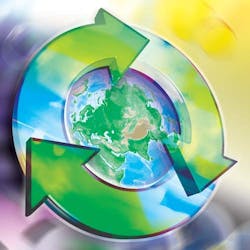EPA begins the specification process for the Energy Star Luminaires specification
With the Energy Star Partners meeting looming next week, the US Environmental Protection Agency is beginning the revision process that will lead to a Luminaires v2.0 specification, and the agency has released a rebate finder tool for consumers.
The US Environmental Protection Agency (EPA) has formally launched the collaborative-revision process that will ultimately lead to an Energy Star Luminaires v2.0 specification. The agency hopes to streamline all aspects of the process, drive lighting efficacy levels higher, and broaden the scope of covered lighting products. Discussion will move forward at the Energy Star Partners Meeting with a Luminaires v2.0-specific meeting set for Oct. 30, 2014. Meanwhile, the EPA has launched a rebate finder tool that can help consumers and businesses in their adoption of energy-efficient solid-state lighting (SSL).
The Energy Star Luminaires v1.1 specification took effect in April 2012. In late 2012, the agency made small revisions, establishing the Luminaires v1.2 specification. Both revisions followed the release of Luminaires v1.0 in October of 2011 supplanting the prior Solid State Lighting Luminaires v1.1 spec and the Residential Light Fixtures V4.2 spec — combining products based on LED and legacy sources.
Luminaires v2.0 goals
The intentions of the v2.0 specification are very straightforward. The agency first hopes to simplify the specification requirements as well as the testing and certification process. The EPA has worked with the National Electrical Manufacturers Association (NEMA) to canvas stakeholders in preparation for the revision process. Some areas that may be modified include color angular uniformity, light-source start time, and zonal lumen density.
Meanwhile, expect the efficacy requirements to go up in v2.0. The agency noted that the industry has made notable improvements in efficacy since the v1.0 specification was published, driven primarily by LED sources. The agency will likely set a forward-looking target expected to be reasonable for the final publication of Luminaires v2.0.
Finally, the v2.0 specification will likely include new product types. Some types under consideration include retrofit products from directional and non-directional luminaires, downlight and accent-light products with non-circular beams, and color-tunable luminaires.
The EPA will hold ins all-encompassing Energy Star Partners meeting on Oct. 27–30 in Phoenix, AZ, where lighting is only a part of the program. Still, parties with an interest in influencing the Luminaires v2.0 specification may want to attend the meeting and the Oct. 30 session on the Luminaires spec.
Rebate finder
Also in news for the larger Energy Star program, including lighting, the EPA has launched a new rebate finder tool online that consumers can use to find both special offers and rebates on a wide variety of products ranging from appliances to lighting. The tool covers both residential and commercial products. In the Lighting & Fans category, you can search for three types of ceiling fans with and without lights, decorative light strings, retrofit lamps, and light fixtures.

Maury Wright | Editor in Chief
Maury Wright is an electronics engineer turned technology journalist, who has focused specifically on the LED & Lighting industry for the past decade. Wright first wrote for LEDs Magazine as a contractor in 2010, and took over as Editor-in-Chief in 2012. He has broad experience in technology areas ranging from microprocessors to digital media to wireless networks that he gained over 30 years in the trade press. Wright has experience running global editorial operations, such as during his tenure as worldwide editorial director of EDN Magazine, and has been instrumental in launching publication websites going back to the earliest days of the Internet. Wright has won numerous industry awards, including multiple ASBPE national awards for B2B journalism excellence, and has received finalist recognition for LEDs Magazine in the FOLIO Eddie Awards. He received a BS in electrical engineering from Auburn University.





